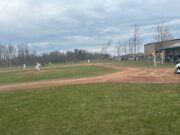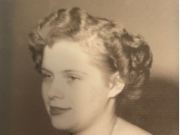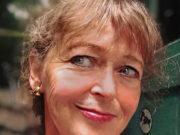 Welcome to “It’s all about the Home”. Please allow me to introduce myself. My name is Jane Ulmer and I am the co-owner of The Wayside Workshop in Aurora. The Wayside Workshop is our family business that my dad started in 1976 in Willoughby, Ohio. We spent about 6 years in Chardon before moving to Aurora Farms where we have been for 32 years. We started out as an unfinished furniture store but we have grown to be so much more! We specialize in quality real wood furniture, finished and unfinished, as well as home décor and accessories. My hope with this column is to inspire, educate, motivate, and engage you in various aspects of the home furnishings industry.
Welcome to “It’s all about the Home”. Please allow me to introduce myself. My name is Jane Ulmer and I am the co-owner of The Wayside Workshop in Aurora. The Wayside Workshop is our family business that my dad started in 1976 in Willoughby, Ohio. We spent about 6 years in Chardon before moving to Aurora Farms where we have been for 32 years. We started out as an unfinished furniture store but we have grown to be so much more! We specialize in quality real wood furniture, finished and unfinished, as well as home décor and accessories. My hope with this column is to inspire, educate, motivate, and engage you in various aspects of the home furnishings industry.
Since we specialize in real wood furniture, I thought it would be appropriate for my first column to be about one of the things that I know best-Wood. This column will explore some of the more common domestic wood types, characteristics, and applications. So here we go….Welcome to Wood 101.
Oak: A very popular hardwood, oak is characterized by its heavy, open textured grain. Oak is an excellent choice for all furniture, kitchen cabinets, moldings, and flooring. Typically, you’ll find oak furniture made from red and white oak. Red oak is more plentiful and more budget friendly than white oak. Often times, oak is milled in a very deliberate way called quarter sawing. This reveals a beautiful grain figure known as rays or ray flecks. Mission style furniture is famous for its use of quarter sawn white oak. All oak looks great with any wood tone stain or clear finish and is almost fool-proof when finishing on your own.
Hickory: This is a very strong hardwood distinguished by extreme contrasts of light and dark wood even within one board. If you like this dramatic natural look, hickory takes stain well but it is most dramatic with just a clear finish. Hickory is great for dining furniture, kitchen cabinets, and flooring due to its durability. Because of its strength, it is often used for tool handles also.
Maple: In its natural state, this hardwood is very white with little noticeable grain. It can be painted or stained as it takes both applications very nicely. Maple is a popular choice for all types of furniture, flooring, and kitchen cabinetry.
Select Cherry: This fine-grained hardwood with pink undertones is very popular for 18th century, formal traditional style, and shaker furniture. Cherry is often considered a luxury wood. One of the more expensive domestic woods, cherry is best with some type of clear finish or wood tone stain finish. These types of finishes enhance the beautiful natural patina of cherry. Due to its cost, you probably don’t want to paint cherry. Plus, it’s just too beautiful to cover up with paint.
Rustic Cherry: Recently, we’ve seen a trend in rustic cherry. Rustic cherry has all the beauty of select cherry. However, some of the smaller knots, pitch pockets, and variation between sap and heartwood are left in. These would normally be cut away in select cherry. This often gives the furniture a more casual or “antique” look, while also using the resource more responsibly. Often times, rustic cherry is less expensive than select cherry.
Alder: This hardwood belongs to the birch family although it is on the softer side. Alder is consistent in color, stability, and uniform acceptance of stained and painted finishes. Alder mimics cherry therefore being a good substitute at a fraction of the cost of cherry. It grows prominently in the Pacific Northwest, which is why it is sometimes referred to as West Coast Cherry. You will find alder used in dining, bedroom and accent furniture. Alder is also becoming very popular in the kitchen cabinet industry because of its close resemblance to cherry.
Pine: The main characteristic of this soft wood are undoubtedly its knots. Pine provides warmth and individuality to each piece produced, ensuring that no two pieces are alike. You will find pine used in a lot of applications from flooring to furniture due to its lower cost. However, pine is typically not used for chairs/seating due to durability issues. Because pine is less expensive, you may think that it would be perfect for painting. Unfortunately, pine contains a large amount of natural resin. These resins have a tendency to “bleed” through painted finishes causing a less than desirable “yellowing” condition. If your goal is for a more distressed primitive finish-this “yellowing” will add more character to the look that you trying to achieve. If you goal is a very clean pristine painted look-pine is not the best option.
I hope this gives you some basic insight into domestic woods that are popular today. In future columns, we’ll talk about furniture construction, finishing, repair, as well as home decorating, style trends, and more. Stay tuned….
Jane is the co-owner of The Wayside Workshop at Aurora Farms Premium Outlets. For more info on The Wayside Workshop, please call 330-562-4800, visit www.WaysideWorkshop.com or facebook.com/WaysideWorkshop.








